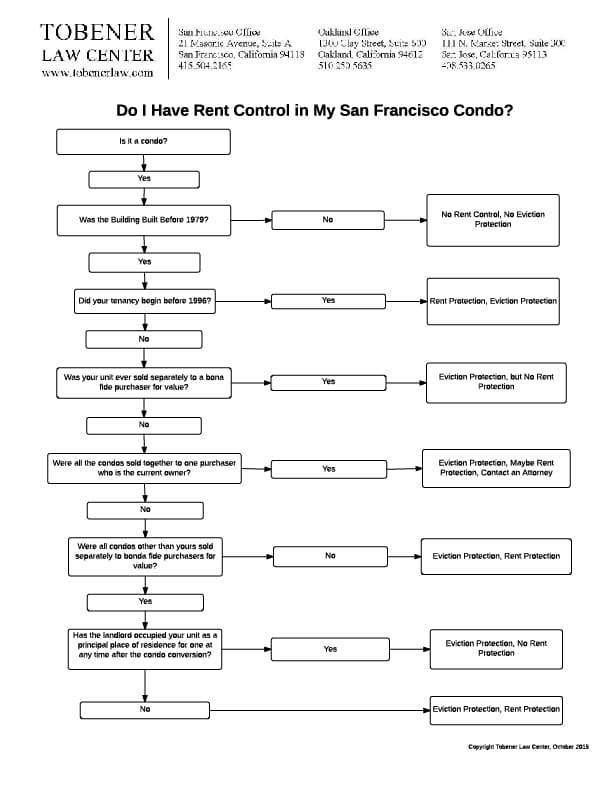September 28, 2013
The 2013 TIC condo conversion legislation has provided new rights to tenants in buildings with three or more units that are being converted to condominiums. Tenant laws relating to condominium conversion of two-unit buildings were unchanged by the new legislation. Tenants going through condominium conversion in larger buildings, however, will now have (1) new protections to prevent no-fault evictions; (2) the right to a lifetime lease; and (3) the right to purchase a unit at the list price. In the near term, these new protections will provide tenants with significant leverage in negotiating with building owners.
Buildings in 2012 or 2013 Lottery
Under the new Expedited Conversion Program passed in 2013, owners of buildings with three or more units who entered the 2012 or 2013 condominium lottery are eligible to convert to condominiums. To be eligible, the building owners must:
- Meet tenant-approval requirements;
- Meet minimum tenancy requirements; and
- Meet minimum owner-occupancy requirements.
Tenant-Approval Requirements
To be eligible to convert to condominiums, owners of buildings must receive approval from at least forty percent of tenants in a building. Tenants must either sign an “Intent to Purchase” form or express in writing an interest in a lifetime lease. Subdivision and Mapping takes the position that this forty percent can be made up of owners and tenants. For example, in a three-unit building with two units occupied by two owners and the third unit occupied by a tenant, the building would not need approval from the tenant. The “Intent to Purchase” cannot be obtained through coercion, fraud, duress, misrepresentation or threat.
Eviction History Requirements
A building with three or more units cannot covert to condominiums if there is any no-fault eviction after March 31, 2013. A “no-fault eviction” includes an owner move-in eviction, a demolition eviction, an Ellis Act eviction, a relative move-in eviction, or a capital improvements eviction.
- A building with two no-fault evictions in two separate units after May 1, 2005 cannot be converted to condominiums for ten years following the last no-fault eviction.
- A building with one no-fault eviction after May 1, 2005 of a protected tenant can never be converted to condominiums. A “protected tenant” is defined as a tenant over the age of sixty years who has occupied the unit for more than ten years; a tenant disabled within the meaning of the Americans with Disabilities Act regardless of length of tenancy; or a tenant who is suffering from a life-threatening illness regardless of length of tenancy.
A building remains eligible to convert to condominiums where the tenant vacates voluntarily pursuant to a buyout agreement with the owners.
Owner-Occupancy Requirements
- To convert by April 2014, buildings with four units or less must have been occupied by at least one owner for five years prior to April 15, 2013, and buildings with five or six units must have been occupied by at least fifty percent of the owners for five years as of April 15, 2013.
- To convert by January 2015, buildings with four units or less must have been occupied by at least one owner for three years prior to April 15, 2014, and buildings with five or six units must have been occupied by at least fifty percent of the owners for three years as of April 15, 2014.
- To convert by January 2016, buildings with four units or less must have been occupied by at least one owner for six years prior to April 15, 2015, and buildings with five or six units must have been occupied by at least fifty percent of the owners for six years as of April 15, 2015.
- To convert by January 2017, buildings with four units or less must have been occupied by at least one owner for six years prior to April 15, 2016, and buildings with five or six units must have been occupied by at least fifty percent of the owners for six years as of April 15, 2016.
- To convert by January 2018, buildings with four units or less must have been occupied by at least one owner for six years prior to April 15, 2017, and buildings with five or six units must have been occupied by at least fifty percent of the owners for six years as of April 15, 2017.
- To convert by January 2019, buildings with four units or less must have been occupied by at least one owner for six years prior to April 15, 2018, and buildings with five or six units must have been occupied by at least fifty percent of the owners for six years as of April 15, 2018.
- To convert by January 2020, buildings with four units or less must have been occupied by at least one owner for six years prior to April 15, 2019, and buildings with five or six units must have been occupied by at least fifty percent of the owners for six years as of April 15, 2019.
Offer to Purchase Unit
Tenants in a building at the time of a condominium conversion must be given the right to purchase their unit at the price offered to the general public. The right to purchase must remain open for sixty days. The offer of sale may not be given until the Final Map or Parcel Map is recorded.
Life Time Lease for Non-Purchasing Tenants
Non-purchasing tenants must be offered a life-time lease. The life-time lease must be executed and recorded prior to approval of the Final Map or Parcel Map approval. The life-time lease expires on the latter of the death of the last-remaining tenant, or if the last remaining tenant has a disabled, elderly or terminally-ill relative in the unit, on the death of the relative.
Subsequent Occupant’s Right to Rent Control in San Francisco (PDF 0.3MB)



